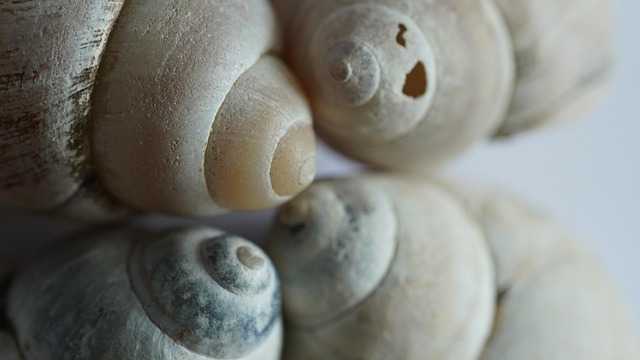Table of Contents
- Exploring the Aesthetic Revolution of 1950s Modern Art
- Key Artists Who Shaped the 1950s Art Scene
- Innovative Techniques That Redefined Artistic Expression
- Cultural Influences Behind 1950s Modern Art Movements
- A Guide to Collecting and Appreciating 1950s Art
- Q&A
- Final Thoughts
Exploring the Aesthetic Revolution of 1950s Modern Art
The 1950s marked a dramatic shift in the world of modern art, embodying a vibrant clash of innovation and rebellion against traditional forms. This era was characterized by the rise of Abstract Expressionism, which embraced bold colors, spontaneous brushwork, and personal expression. Artists such as Jackson Pollock and Mark Rothko led the charge, prioritizing emotion and individual experience over representational forms. The famous drip paintings of Pollock, with their chaotic and energetic strokes, captivated audiences, inviting viewers to immerse themselves in the expressive depths of color and texture.
Meanwhile, the emergence of Pop Art in the late 1950s introduced a new narrative, blending commercialism with fine art. Influential figures like Andy Warhol and Roy Lichtenstein explored popular culture, transforming mundane subjects into visual commentary. Warhol’s iconic soup cans and Lichtenstein’s comic strip-inspired paintings blurred the lines between high art and consumerist culture. This shift challenged the existing standards of what constituted art, paving the way for future generations to redefine boundaries through their creative expressions.
The decade also witnessed the proliferation of Geometric Abstraction, as artists began to explore form and space in novel ways. Movements like Hard-edge painting employed sharp lines and solid colors, offering a clean, intellectual aesthetic that contrasted with the emotional outpourings of Abstract Expressionism. Notable artists such as Ellsworth Kelly and Donald Judd emphasized minimalism and clarity, reflecting the post-war technological optimism of the era. This revolution created an exciting tapestry of styles, each adding to the conversation about identity, culture, and the function of art in society.


Key Artists Who Shaped the 1950s Art Scene
In the vibrant landscape of the 1950s art scene, several key figures emerged, each leaving an indelible mark on the evolution of modern art. Among them, Jackson Pollock revolutionized the concept of painting with his pioneering drip technique, where he would let paint spill and drip onto canvases laid on the ground. This method not only emphasized the artist’s physical engagement with the work but also invited the viewer into an exploration of spontaneity and chaos. His bold, abstract expressions reflected the underlying existential tensions of the post-war era, making Pollock a foundational figure in the Abstract Expressionism movement.
Complementing Pollock’s visceral approach, Mark Rothko introduced a contemplative interpretation of color and form. Known for his large, color field paintings, Rothko sought to evoke deep emotional responses through his artwork. His use of luminous, layered colors creates an immersive experience that invites viewers to contemplate the spiritual qualities of art. Rothko’s work challenged the traditional notions of representation, suggesting that the essence of art lies in its ability to communicate feelings rather than depict reality.
Frida Kahlo stands out as an iconic voice reflecting the complexities of identity and personal experience in the 1950s. Through her deeply personal and symbolic self-portraits, Kahlo explored themes of pain, gender, and cultural heritage. Her bold use of color, paired with surrealist elements, creates a unique intersection of personal narrative and broader social commentary. Kahlo’s works continue to resonate, not just as expressions of individual struggle but as powerful statements of cultural feminism, positioning her as a pivotal artist in the decade’s evolving narrative.


Innovative Techniques That Redefined Artistic Expression
The 1950s marked a pivotal moment in the evolution of artistic expression, where traditional boundaries were shattered in favor of innovative methods that prioritized personal expression and emotional resonance. Among these techniques, abstraction and expressionism emerged as dominant forces, allowing artists to delve deep into their subconscious minds. The use of vibrant colors, bold brush strokes, and dynamic shapes became hallmarks of this era, encouraging viewers to experience art on a visceral level rather than a purely intellectual one.
Additionally, the advent of mixed media revolutionized how artists approached their work. By combining various materials—such as paint, photography, and found objects—creators introduced a three-dimensional quality to their pieces. This incorporation of texture and unconventional materials fostered a sense of exploration and experimentation, inviting the audience to interact with the artwork in new ways. Some of the most noteworthy styles from this period include:
- Collage: Fusing images and materials to create layered meanings.
- Assemblage: Sculpting with everyday objects, turning the mundane into the magnificent.
- Drip Painting: Pioneered by Jackson Pollock, emphasizing spontaneity and movement.
The impact of technology also redefined the creative landscape. The emergence of new art materials and techniques, such as acrylic paints and digital processes, expanded the artist’s toolkit. This democratization of art-making meant that any aspiring artist could explore their creativity without the constraints of traditional mediums. A fascinating aspect of this evolution is the incorporation of popular culture into fine art, blurring the lines between high art and mainstream appeal, as seen in the works of artists like Andy Warhol and his iconic Pop Art movements.


Cultural Influences Behind 1950s Modern Art Movements
The 1950s saw a vibrant interplay of cultural dynamics that profoundly influenced modern art movements. Post-World War II America was a melting pot of ideas, as returning soldiers and new immigrants reshaped the social landscape. The rise of consumerism significantly impacted artistic expression, as artists responded to the burgeoning material culture through their work. Many modernist artists began to incorporate elements of advertising, branding, and popular culture into their creations, blurring the lines between fine art and commercialism. This era marked the birth of movements like Pop Art, where everyday objects were elevated to the status of art, challenging traditional notions of creativity and value.
At the same time, the Cold War cast a long shadow over the artistic community. Political tensions and ideological battles fueled a drive for artistic innovation. Artists sought to break away from established conventions, with movements such as Abstract Expressionism emerging as a powerful reaction against societal constraints. The need to express individual emotions and subjective experiences took precedence, highlighted by the spontaneous techniques of monumental figures like Jackson Pollock and Mark Rothko. Their works were not just visual statements; they reflected a deeper existential struggle, symbolizing freedom and the search for identity in a rapidly changing world.
The influence of global movements also played a crucial role in shaping art during the decade. As artists began to travel and exchange ideas with their counterparts abroad, cross-cultural interactions flourished. European influences, particularly from artists like Henri Matisse and Piet Mondrian, can be observed in the styles adopted by American artists. Additionally, the incorporation of Eastern philosophies and aesthetics prompted a more holistic approach to art-making. This melting pot of ideas led to innovative practices that challenged the norms of art, making the 1950s a pivotal moment in the evolution of modern art.


A Guide to Collecting and Appreciating 1950s Art
Collecting art from the 1950s is akin to owning a piece of history, reflecting a time of dynamic cultural change and experimentation. This era witnessed the rise of various artistic movements, from Abstract Expressionism to Pop Art, each expressing the spirit of post-war optimism. As you venture into this captivating world, it’s essential to appreciate the unique characteristics that define 1950s art. Seek pieces that resonate with you personally, whether that be through bold colors, innovative forms, or iconic imagery. To start your collection, consider focusing on specific artists who made significant contributions during this time, such as Jackson Pollock, Mark Rothko, or Andy Warhol.
When evaluating works from this decade, pay attention to several key elements that distinguish true artistry from mere decor. Consider the following factors:
- Medium: Explore different forms such as paintings, sculptures, or prints.
- Provenance: Investigate the artwork’s history of ownership to ensure authenticity.
- Condition: Assess the physical state of the piece; restoration processes can impact value.
- Significance: Look for works that were part of pivotal exhibitions or influenced contemporary styles.
As you curate your collection, remember that engaging with others can deepen your understanding and appreciation of 1950s art. Attend local galleries, exhibitions, and auctions specializing in modern art, where you can network with fellow enthusiasts and collectors. Furthermore, joining online forums or social media groups dedicated to art appreciation can provide invaluable insights. To illustrate the diversity within this exciting decade, here’s a brief overview of some notable works and their significance:
| Artwork | Artist | Year | Movement |
|---|---|---|---|
| No. 5, 1948 | Jackson Pollock | 1948 | Abstract Expressionism |
| Campbell’s Soup Cans | Andy Warhol | 1962 | Pop Art |
| Harvard Blue | Mark Rothko | 1957 | Color Field |
Q&A
Q&A: Understanding 50s Modern Art Q1: What defines the modern art movement of the 1950s? A1: The modern art movement of the 1950s is characterized by its departure from traditional art forms and techniques. Artists embraced abstraction, experimentation, and new media, reflecting the sociopolitical changes of the era. This period saw the emergence of styles such as Abstract Expressionism, Pop Art, and Minimalism, as creators sought to express their individual experiences and emotions in a rapidly changing world. Q2: How did historical events influence 50s modern art? A2: Historical events like World War II and the post-war boom significantly influenced modern art in the 1950s. The trauma of war led to a search for new forms of expression, while the rise of consumer culture and the Cold War encouraged artists to explore themes of identity, freedom, and materialism. This context shaped works that both challenged and celebrated the status quo. Q3: Who were the key figures in 50s modern art? A3: Several influential artists emerged during this period. Key figures include Jackson Pollock, known for his drip paintings; Mark Rothko, celebrated for his color field works; and Andy Warhol, a pioneer of Pop Art who used commercial techniques to critique consumerist society. Each artist contributed uniquely to the evolving narrative of modern art. Q4: What are some hallmark styles of 50s modern art? A4: The 1950s witnessed the rise of several hallmark styles, such as:- Abstract Expressionism: Focused on spontaneous, automatic, or subconscious creation, emphasizing individuality.
- Pop Art: Celebrated mass culture and consumerism, using imagery from advertisements and comic books.
- Minimalism: A reaction against the complexity of Abstract Expressionism, minimalism favored simplicity and reduced forms.
